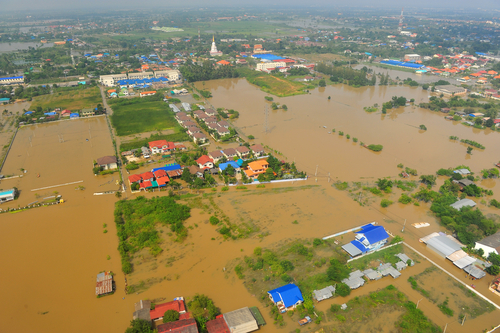When the earthquake and tsunami hit Japan in March, it was seen as a worst-case scenario.
In some ways it was. It was the most costly disaster in human history, for example, and the economic toll has been estimated north of $200 billion. Likewise, the meltdown at the Fukushima Daiichi nuclear plant was among the scariest realities that nation could ever face.
The other context in which the catastrophe has been, almost undoubtedly, the worst ever is in terms of supply chain disruption. Toyota, for example, was forced to delay the launch of new wagon and minivan versions of its popular Prius hybrid line of automobiles. Other carmakers and electronic companies were also hard hit by an inability to get crucial parts.
In hindsight, however, the disruption was not quite as bad as initially feared. Toronto’s Globe and Mail reported as much in June.
While there are shortages of vital parts for cars and electronics – including some computer chips, silicon wafers and batteries – the big surprise is that the March 11 natural disaster wasn’t more of a disaster for the complex and time-sensitive global supply chain.
The system is proving remarkably resilient – in part because Japan is far less connected to the global economy than many other advanced countries. That’s because Japanese manufacturers moved faster, and earlier than most, to lower-wage countries offshore, most notably to China.
The worst-case scenario envisioned after the Japanese disaster, including widespread and lengthy shutdowns of plants around the world, hasn’t happened.
There are two sides to this coin.
On the one hand, let’s all give a round of applause to those who helped make the system “remarkably resilient.” Indeed, later in that article, Garland Chow, a professor and supply chain expert from the University of British Columbia, added that “Ten years ago, this kind of disaster would have been twice as bad because they weren’t ready.”
Then again, if the Japan disruption wasn’t as bad as expected, will it serve as enough of a lesson that a lot of work still needs to be done in terms of improving supply chain resiliency? Will companies become complacent? Will they continue to diversify sourcing options enough to weather the storm equally well if a true worst-case crisis occurs?
A new report by Swiss Re may shed some light on that question.
“China and Natural Disaster – A Case for Business Resilience” offers a simple, concrete, unmistakeable reason why a disruption in China could be much, much more difficult to navigate than the March disaster in Japan.
I’m not a mathematician, but it seems that less than half of North American companies relied on Japanese manufacturers but nearly all of them rely on those in China. Fortunately, more are realizing the vulnerability they have there. In fairness, most of those surveyed by FM Global already were concerned about the disruption potential of a disaster in China. But a full 61% are now more concerned after seeing what happened in Japan.
The below graphic shows how they are reacting.
If you can’t read the mitigation strategies for natural hazard exposures in China listed in the chart below, click here to see a larger image. But the key takeaways come from the top three areas:
- 70% are considering “increasing alternatives sourcing”
- 65% are considering “increasing collaboration with suppliers on mitigating risk at their locations”
- 61% are considering “implementing a more robust risk assessment process.”
“A natural disaster-related supply chain disruption in China would have far-reaching and long-lasting negative economic impact,” said Vinod Singhal, Brady Family Professor of Operations Management at the Georgia Institute of Technology’s College of Management. “It would slow down the global economy because China is not only a major exporter of goods, but also a major importer of goods. It would cause shortages in many consumer and industrial products that could lead to inflation and devastate the share price of companies.
buy symbicort online https://royalcitydrugs.com/symbicort.html no prescription
”
Fortunately, it seems like most companies do plan to improve their resiliency efforts in China. But there are still nearly a third of companies that aren’t. Hopefully, we will never have to find out if “good enough” is good enough.





